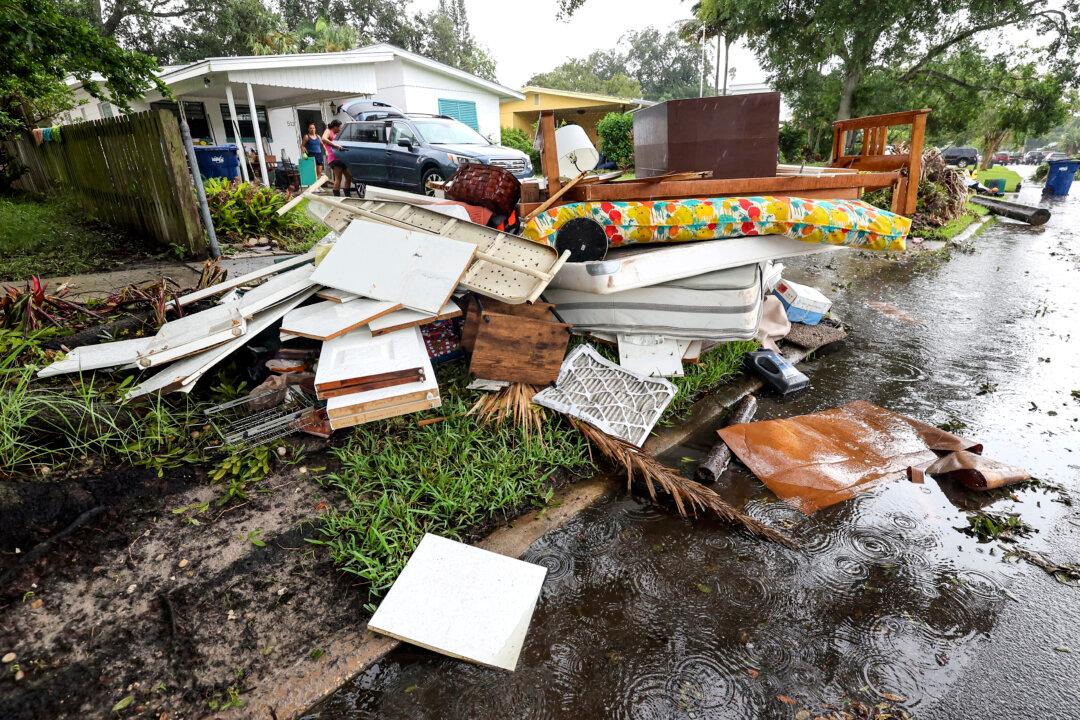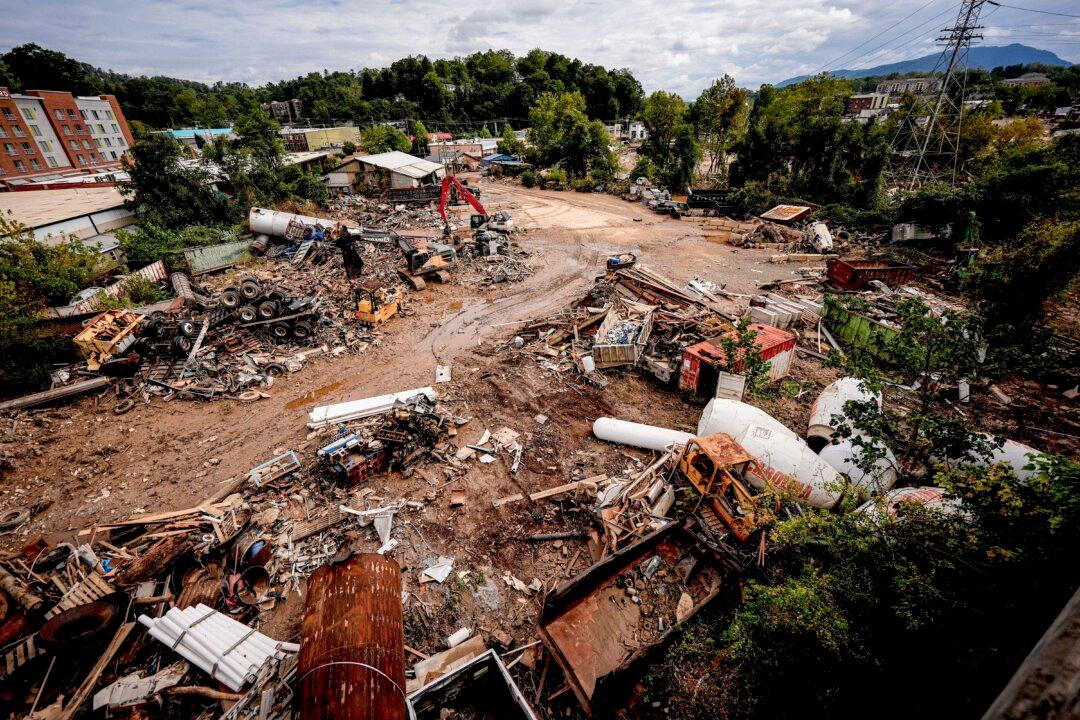President Joe Biden on Sept. 29 approved the declaration of a federal major disaster in North Carolina and Florida after hurricane Helene caused widespread damage in both states, including severe damage to the western portion of North Carolina, where torrential rains have sparked mudslides and flooding that have cut off entire communities.
Buncombe County, which includes the mountain city of Asheville, North Carolina, reported 30 people killed due to the storm, and several other fatalities reported in North Carolina Sunday pushed the overall death toll to at least 91 people across several states.
Helene made landfall late Sept. 26 as a Category 4 hurricane along a largely undeveloped expanse of pine trees and salt marshes on Florida’s Big Bend coast, before it weakened to become a tropical storm hours later.
The storm produced far-reaching effects across much of the southern United States, producing flooding and tornadoes several hundred miles away.
In North Carolina, Helene’s heavy rains in the state’s western mountains caused massive flooding and mudslides in the Asheville region, cutting off most communication and making roads impassable.
Videos posted online show large portions of the city of Asheville underwater. In North Carolina alone, more than 400 roads remained closed as of Sept. 28 as floodwaters began to recede and reveal the extent of the damage, officials said.
Cooper said supplies were being airlifted to that part of the state. Buncombe County officials said Interstate 26 between Asheville and South Carolina had reopened, but most other routes into the city were impassible.
At a press conference on Sept. 29, the governor warned that more fatalities are expected.
“This is an unprecedented tragedy that requires an unprecedented response,” Cooper said.
He asked residents to avoid traveling on roadways in western North Carolina, not only to avoid dangers but to keep roads clear for emergency vehicles. More than 50 search teams have fanned out across the region in search of stranded people.
“Many people are cut off because the roads are impassable,” Cooper said. Supplies were being airlifted to the region around Asheville, a city tucked in the western North Carolina mountains and known for its arts, culture, and natural beauty.
Western North Carolina has become isolated as a result of the landslides and flooding, which forced the closure of Interstate 40 and other roads, authorities said. There have been hundreds of water rescues, such as in rural Unicoi County in eastern Tennessee, where dozens of patients and staff were rescued by helicopter from a hospital rooftop on Sept. 27.
Late last week, there were warnings that heavily flooded rivers had overtopped multiple dams in both North Carolina and Tennessee, sparking concerns of dam failures.







